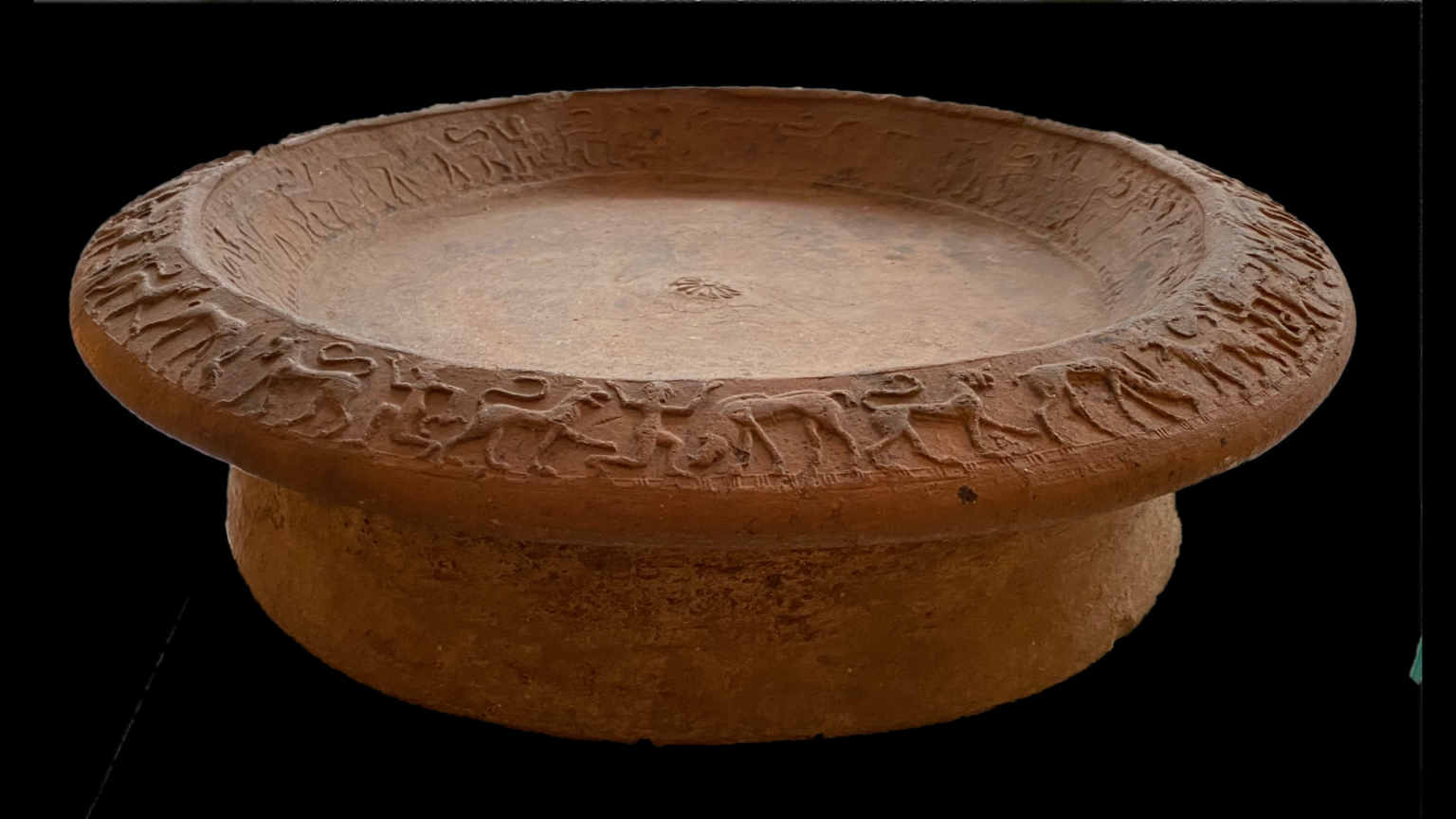
A work of buff fired clay, enlivened by a hunting scene running around the rim. Exceptionally decorative and charming, when filled with fruits, most appropriately pomegranates – so richly coloured and richly symbolic.
Condition: Excellent. Intact.
Item reference: CL0810
